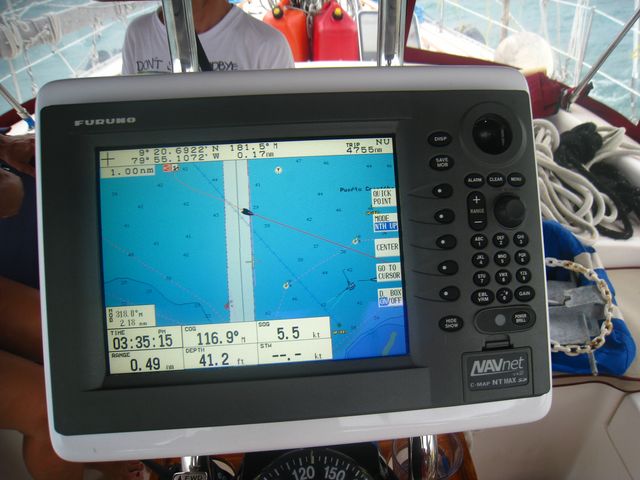Panama with a friend
Panama - Posted On
Lifestyle changes completely with Franck-Olivier (FO).
As he is not fond of camping overnight in strange places and cooking noodles on a small petrol stove for every meal, he offers me a more comfortable way for enjoying Panama for the 10 days we will travel together. Hotels, restaurants, taxis are quite unusual for me.
I will therefore leave the bike at a Hospitality Club host girl for the time being.
Our first goal is to get back to San Blas islands. Our choice is Isla del Diablo, a small paradise on Earth. Coco trees and white sand is all about the island over 500m of length.
In front of us lays Isla Perro, even smaller. A few open houses shelter 3 or 4 families whose only activity is about tourism.
We camp there, taking the best out of our Robinson-like time. Snorkeling is the best activity as over a few hundred meters had been sunk a wreck full of colorful fishes. I would stay here weeks, for sure, but FO has not the same idea for visiting Panama, which I can easily understand.
The next good idea is making FO’s dream true: crossing the famous Panama Canal on a sailboat. We have to find a boat and go to Shelter bay marina close to Colon.
Bad luck, 10min next our arrival in the bus station, FO goes alone taking a picture only for a few seconds. It’s enough for a guy getting to him trying to steal his camera. FO blocks his arm while the guy gets a knife out his pocket. Quick as Spiderman, FO seizes him at the throat and shouts at him, pulling him away!
The bad guy has no choice but acting as if nothing happened. We leave quickly the area for Shelter bay marina, a much safer place way out of the city. After that we get to know that Colon is one of the most dangerous places in Central and South America. It is just impossible to walk out on the street when you are a tourist.
Within 24 hours we find the US sailing vessel Tregoning, coming straight from Gainesville, Florida. This means a lot for me as I have been living and studying there for nearly a year in 2001.
Randall and Alison hire us as “linehandler” for the two days of the canal crossing.
As a general rule for sailing vessel crossing, each boat must have 4 linehandlers apart of the skipper, plus a pilot in charge of the ACP (the canal company). Our job consists in dealing with one line among the four which are attached all around the boat to hold it to the canal walls. As the water goes up and down in the locks, we have to regulate the tension.
We will pass 3 locks (Gatun locks) in a row the first evening at night. It will be raining like hell just by the time we got to be outside.
Two dolphins jump happily out of the water 10 meters away behind the boat telling us goodbye while a huge cargo Panamax slowly enter the first lock just before our turn.
The impressive gates close slowly themselves, I can’t help but thinking about the Gate of the Moria, In the “Lord of the Rings” story.
We pass the night on board in the beautiful Gatun Lake and start to cross effectively the canal in the next morning. The whole crossing must be made motoring, trying to keep a 6 knots speed. Huge cargo ships pass us over and we have to watch about it carefully.
We can see the huge work the canal had required. Our adviser explains us how 22.000 French workers have died in the first attempt of the canal, killed by malaria and yellow fever. Ferdinand de Lezeps, who made the Canal of Suez, gave up the project to the USA.
Instead of making the canal at the sea level as the French wanted to do, they used an impressive system of 3+3 locks elevating the boats to 28m above sea level, using the huge Gatun Lake as an efficient shortcut.
Nowadays work is currently in progress to make a second canal wider to let pass bigger boats than actual norm Panamax. Progress!
The canal traffic is a very good sign about seeing how good or bad our world economy works. It gives also a good idea about the consumption global system rises up.
Pedro Miguel and Miraflores locks end up our adventurous trip throughout the canal. FO seems really happy, as the rest of the crew team.
Our captain Randall and his wife Alison invite us to stay on board a bit longer; we thank them by a huge lasagna meal as I was dreaming for a very long time.
When FO leaves, I realize again how hard it remains, even after 18 months of travel, to say goodbye to a good friend.






